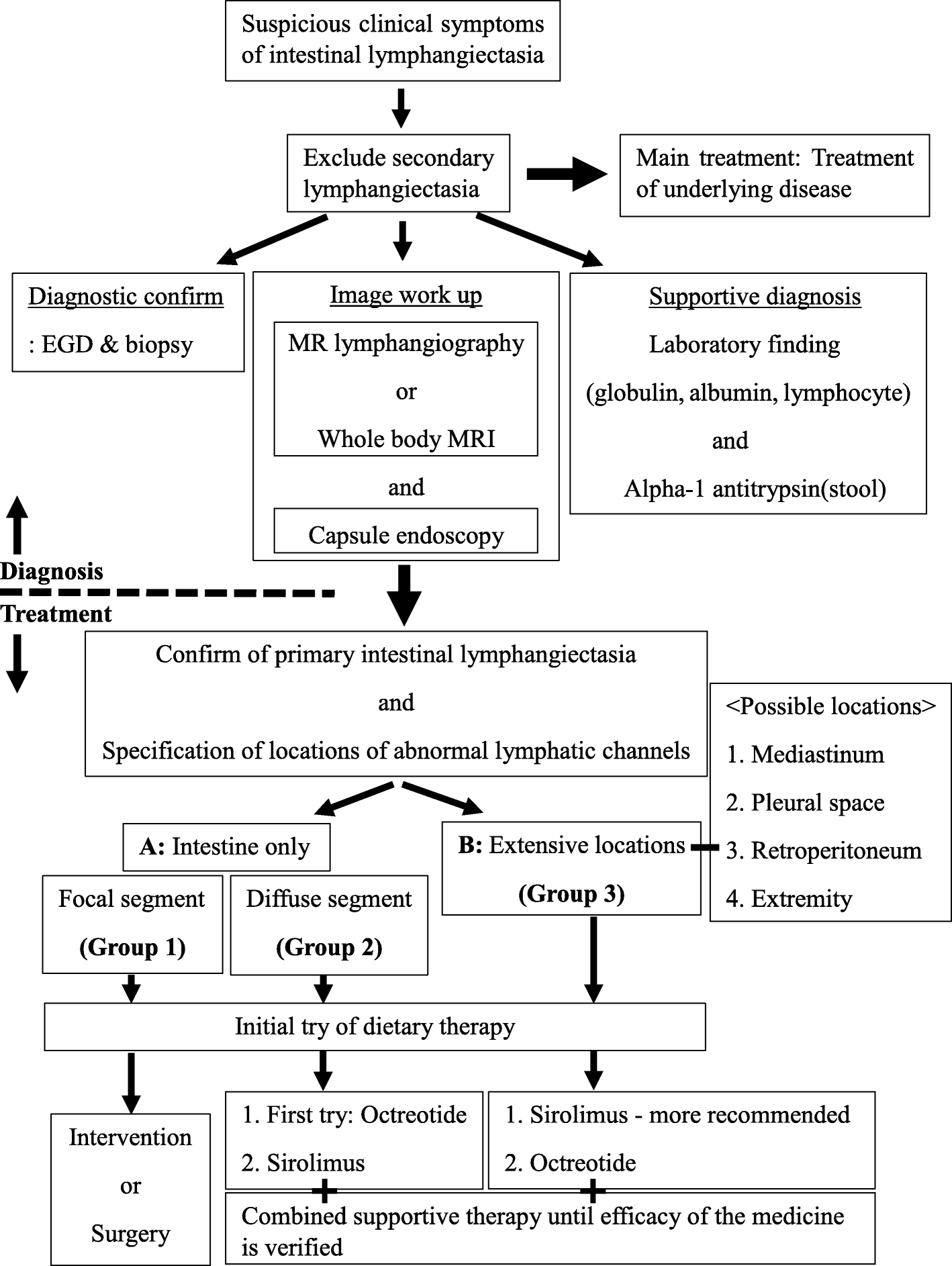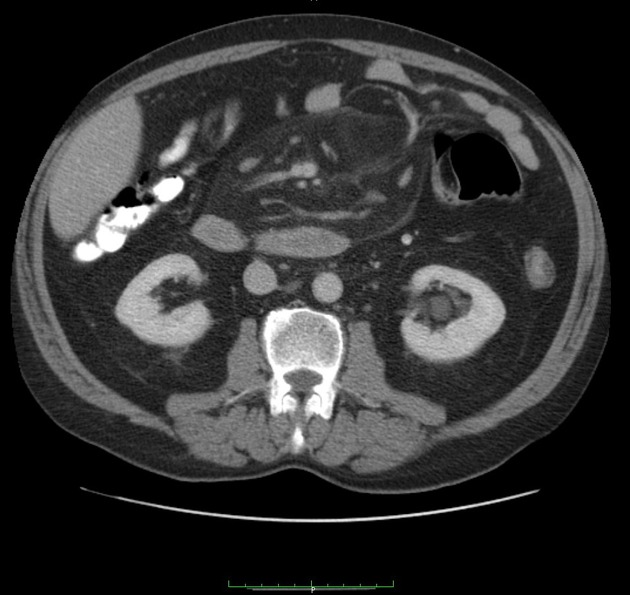intestinale Lymphangiektasie





Intestinal lymphangiectasia is a condition characterized by dilated intestinal lacteals causing loss of lymph into the lumen of the small intestine. This can result in hypoproteinemia, hypogammaglobulinemia, hypoalbuminemia and lymphopenia.
Epidemiology
It may present in either children or adults.
Pathology
The condition may be localized or diffuse. It can occur from a number of etiologies, which include:
- primary/congenital form: primary idiopathic intestinal lymphangiectasia / Waldmann disease
- secondary form: resulting from a tumor, fibrosis, or another cause of lymphatic obstruction.
The definitive diagnosis is made by endoscopic evaluation and biopsy of the duodenum and/or jejunum or alternatively from surgically resected small intestine.
Biochemical tests
- fecal alpha-1-antitrypsin is often raised
Radiographic features
General
Non-specific and may show bowel wall thickening to varying degrees.
Complications
- malignant transformation into lymphoma: may occur in around 5% of cases .
Treatment and prognosis
Treatment has usually comprised of a low fat diet along with medium-chain triglyceride oral supplements.
History and etymology
It was first described by TA Waldmann in 1961 .
Differential diagnosis
As a broad differential of bowel thickening, consider forms of enteritis.
Siehe auch:

 Assoziationen und Differentialdiagnosen zu primäre intestinale Lymphangiektasie:
Assoziationen und Differentialdiagnosen zu primäre intestinale Lymphangiektasie:


